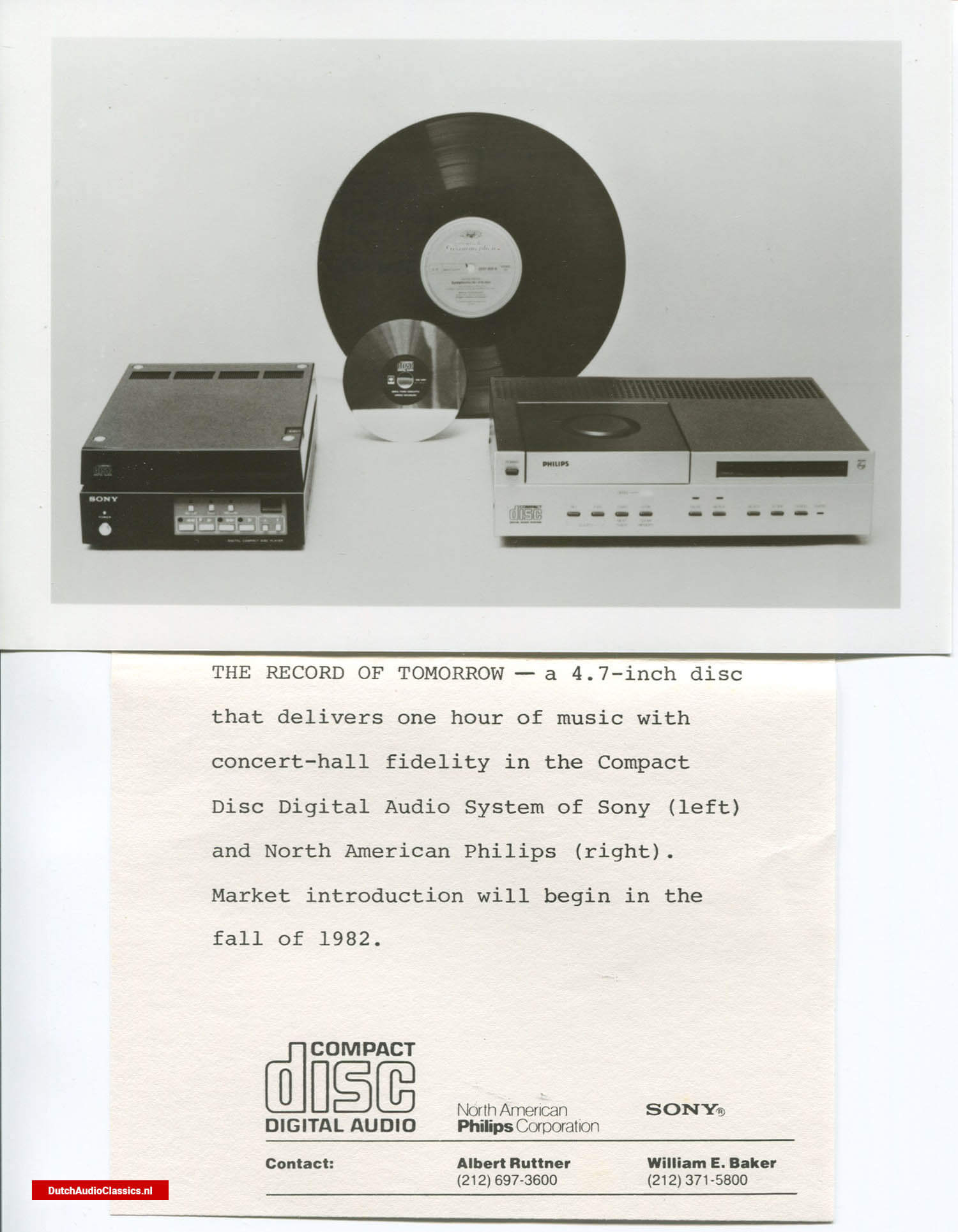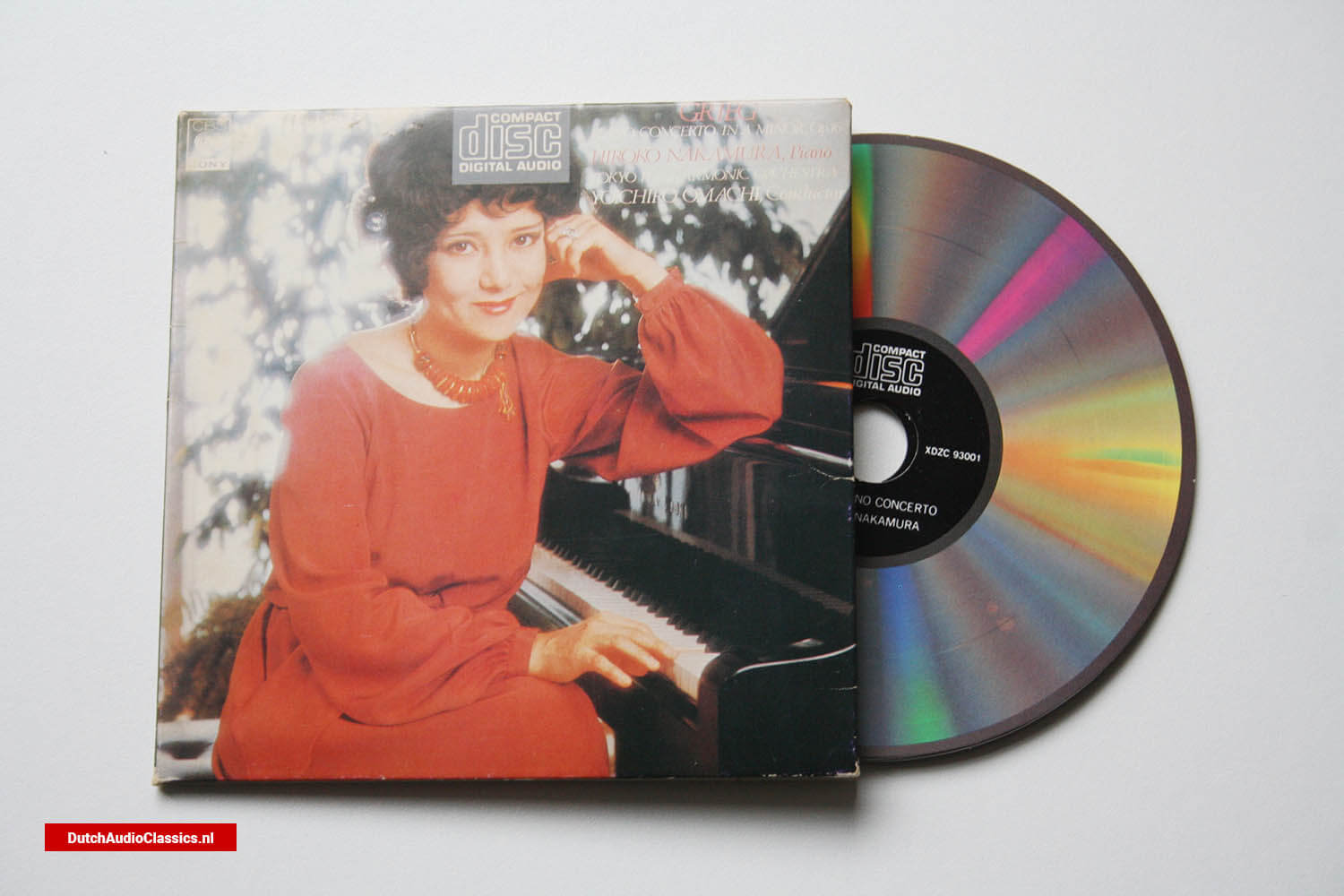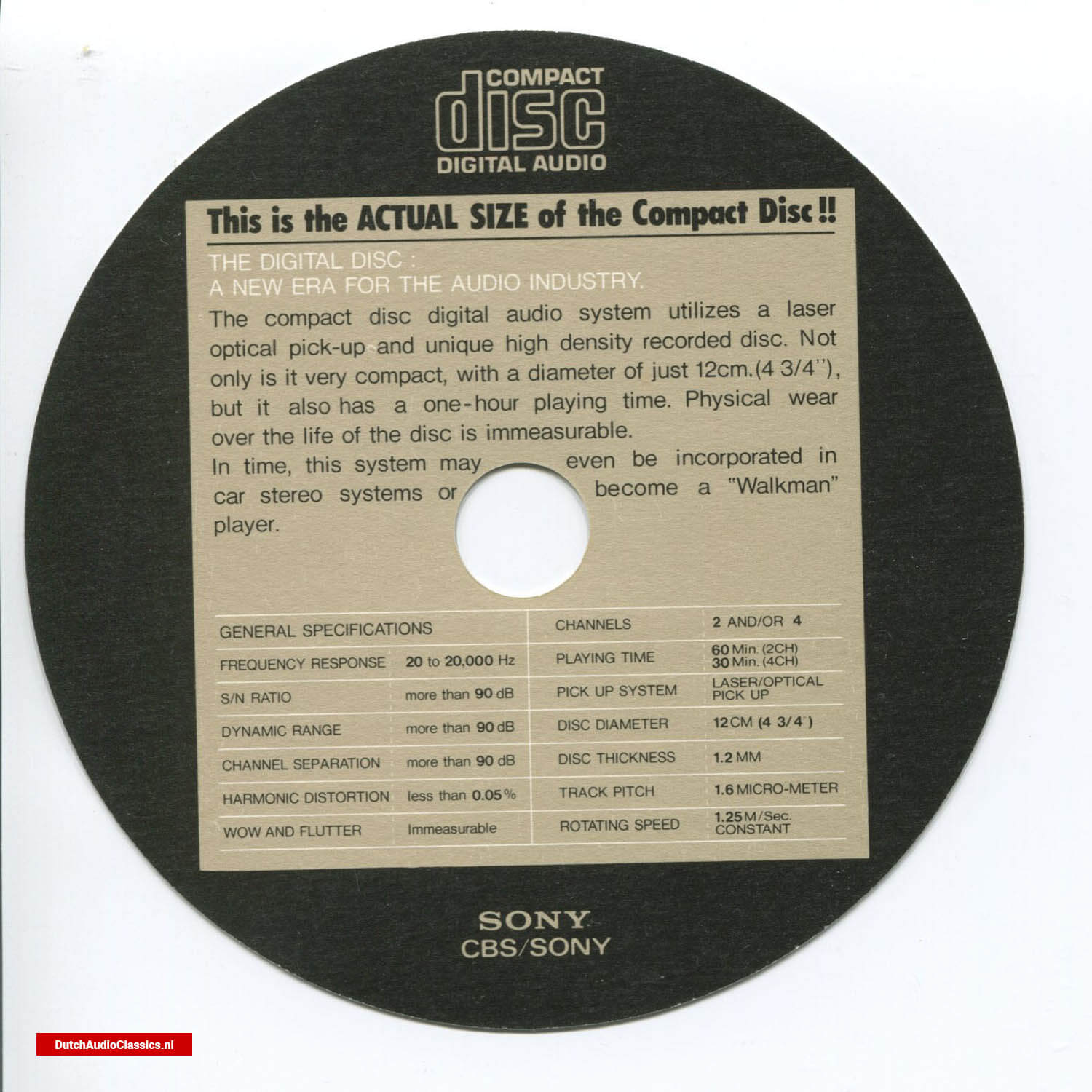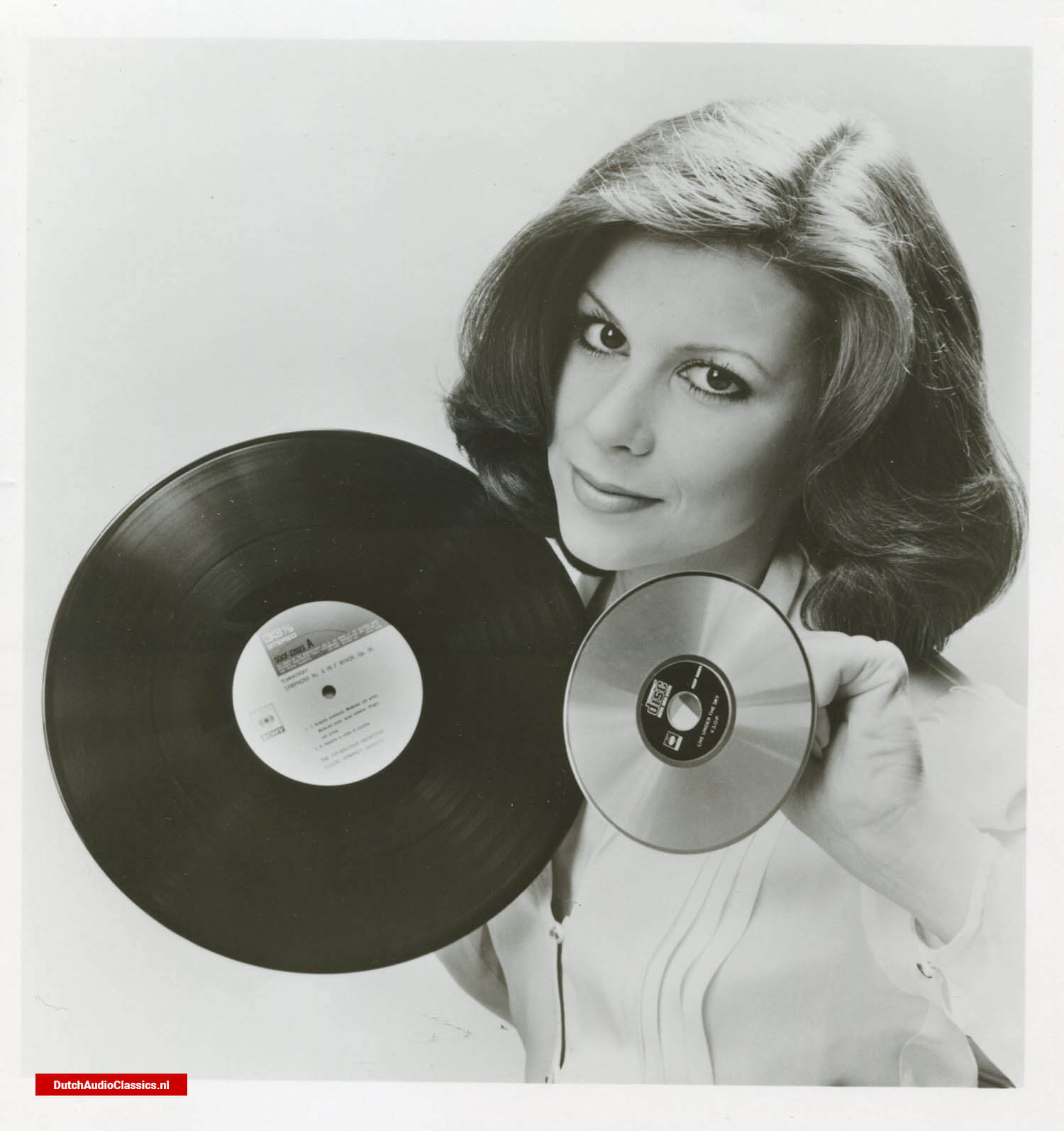After Sony and Philips reached an agreement on the Compact Disc Digital Audio after 6 meetings, they officially presented the format in a press conference held at the Plaza Hotel in New York on may 27, 1981.
This speech from Frank L. Randall JR, Vice Chairman of the North American Philips Corporation on 27 May 1981, is part of the Philips/Sony press kit which was specially prepared for the New York press conference.
The 1981 Philips/Sony press kit also includes:
Speech Frank L. Randall JR, Vice Chairman of the North American Philips Corporation, 27 May 1981.
This, as you may know, is the first joint North American Philips and Sony demonstration of the Compact Disc Digital Audio System in the United States. As such, some brief background comment may be helpful.
![Philips/Sony press kit 27 May 1981 New York]()
![Philips/Sony press kit 27 May 1981 New York]()
![Philips/Sony press kit 27 May 1981 New York]() Philips/Sony press kit 27 May 1981 New York
Philips/Sony press kit 27 May 1981 New York
After Philips' initial presentation of the Compact Disc System to the international press in march 1979, and in the U.S. in may 1979, contacts with the audio hardware and re cord industries were intensified. Recognition of the work Sony had already done in the field of pulse-code modulation with their PCM professional recorders indicated that a joint effort with Sony in this field would be mutually advantageous. In a relatively short time this relationship had led to the desired level of sophistication in the PCM technology, specifically in the areas of error correction and modulation.
Today, we are in a position to state that all the requirements for the introduction of this new system have been met. Progress in sound performance has been dramatic, achieving near-perfect sound reproduction that will not deteriorate with use, as is the case with the best of today's l.P.'s on the best stereo equipment.
The main parameters of the compact disc system were presented to the digital audio disc conference in june 1980 as the recommended world standard for digital audio disc. The digital audio disc committee is comprised of representatives from 47 audio hardware and software manufacturers from all over the world.
![Philips/Sony press kit 27 May 1981 New York]() Frank L. Randall JR, Vice Chairman of the North American Philips Corporation
Frank L. Randall JR, Vice Chairman of the North American Philips Corporation
Polygram and C.B.S. Announced at the same time that they will release their repertoire on the compact disc system.
During the japan audio fair in october 1980, philips and Sony and several other companies showed their digital audio disc developments, most of them based on the optical tech nology . Since then and in anticipation of the outcome of the d.A.D. Evaluation, a number of companies in our industry announced that they have adopted the compact disc compatible format. We are convinced that after the d.A.D. Committee has published its evaluation, all major hardware and soft ware companies in the u.S., japan and europe will support our system.
Let me summarize in brief the most important characteristics of the system:
-
superior sound reproduction
-
insensitivity to dust and scratches
-
no wear or tear on the disc or pick-up
-
a mini-sized player and a pocket-sized disc of 12 cm (4/3-4 in.) in diameter
-
an uninterrupted playing time of 60 minutes on two channels on one side of the disc
-
the compact disc is conceived in such a way that information, in addition to the sound channels, can be encoded in the disc.
This additional information can be used for improved opera- tional convenience such as preselection of the music tracks, as well as the visual display of music titles, names of the composers or the orchestras.
![Philips/Sony press kit 27 May 1981 New York]()
The compact disc player can be connected to any audio system in the same way as today's record-player, but with signifi- cantly better sound reproduction that will not deteriorate in use or with the passage of time.
I would like to emphasize that the compact disc system con- sists of three elements: the player, the disc and the program. It is evident that compact disc can only be introduced if the availability of the other two elements of the system is assured. As we have seen in other fields, the pace of market development will be set by the availability
Of large numbers of discs for consumer purchases. We are pleased to have mr. Harvey schein of polygram with us today to add his comments.
![Philips/Sony press kit 27 May 1981 New York]()
![Philips/Sony press kit 27 May 1981 New York]()
You may have the impression that I am talking about a revolutionary new audio disc system of the future, but from the demonstrations you will hear shortly, it will be clear that the revolution is upon us, and that it will be evolutionary.
We have prototypes that can play back a disc with excellent quality, and can demonstrate that the system can be repro- duced around the world with complete compatibility of players and discs of various manufacturers.
We regard the compact disc digital audio system as a prime innovation and a long-awaited stimulus needed by both the hardware and record industries to create a new wave of interest and demand in home entertainment.
It opens up new horizons in the further enrichment of living for those of us who appreciate the reality of pure, unadulter- ated sound.
![Philips/Sony press kit 27 May 1981 New York]()
The market introduction of the compact disc digital audio system in the united states by north american Philips consumer electronics corporation with polygram corporation will follow the market introductions outside the united states.
Other new products to take advantage of the system's performance will become available on an evolutionary basis. Their introduction will permit consumers to upgrade their systems while continuing to enjoy their existing hi-fi equipment together with the compact disc player.
We at north american Philips see compact disc digital audio as a dynamic innovation — one of many we expect — that strengthens our belief that the consumer electronics industry is poised for a period of significant growth. For a number of reasons, both technological and economic, the day of the true home entertainment center is fast arriving, and new products and applications now in development offer exciting potential for industry growth in the '80s.
The 1981 Philips/Sony press kit also includes:

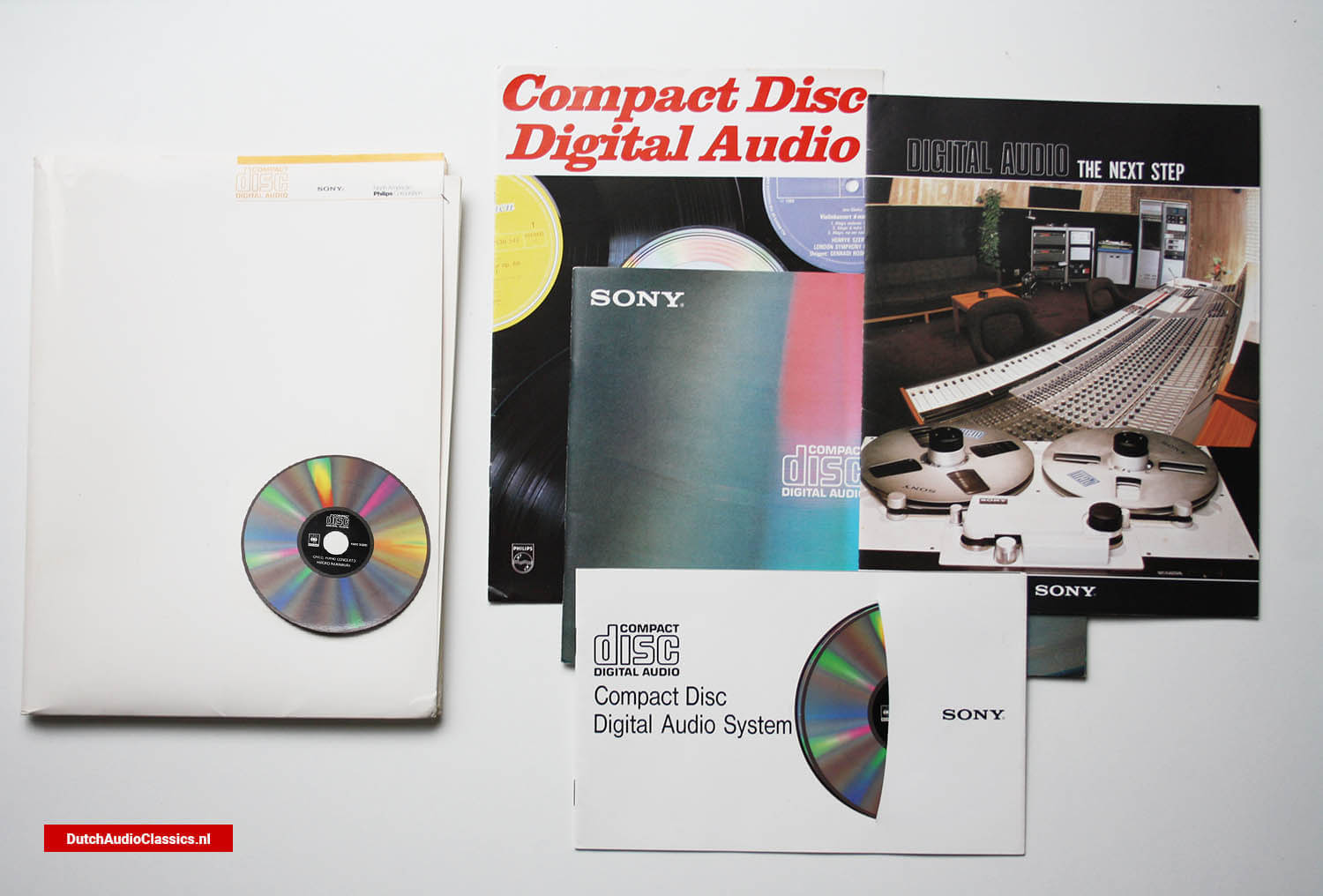
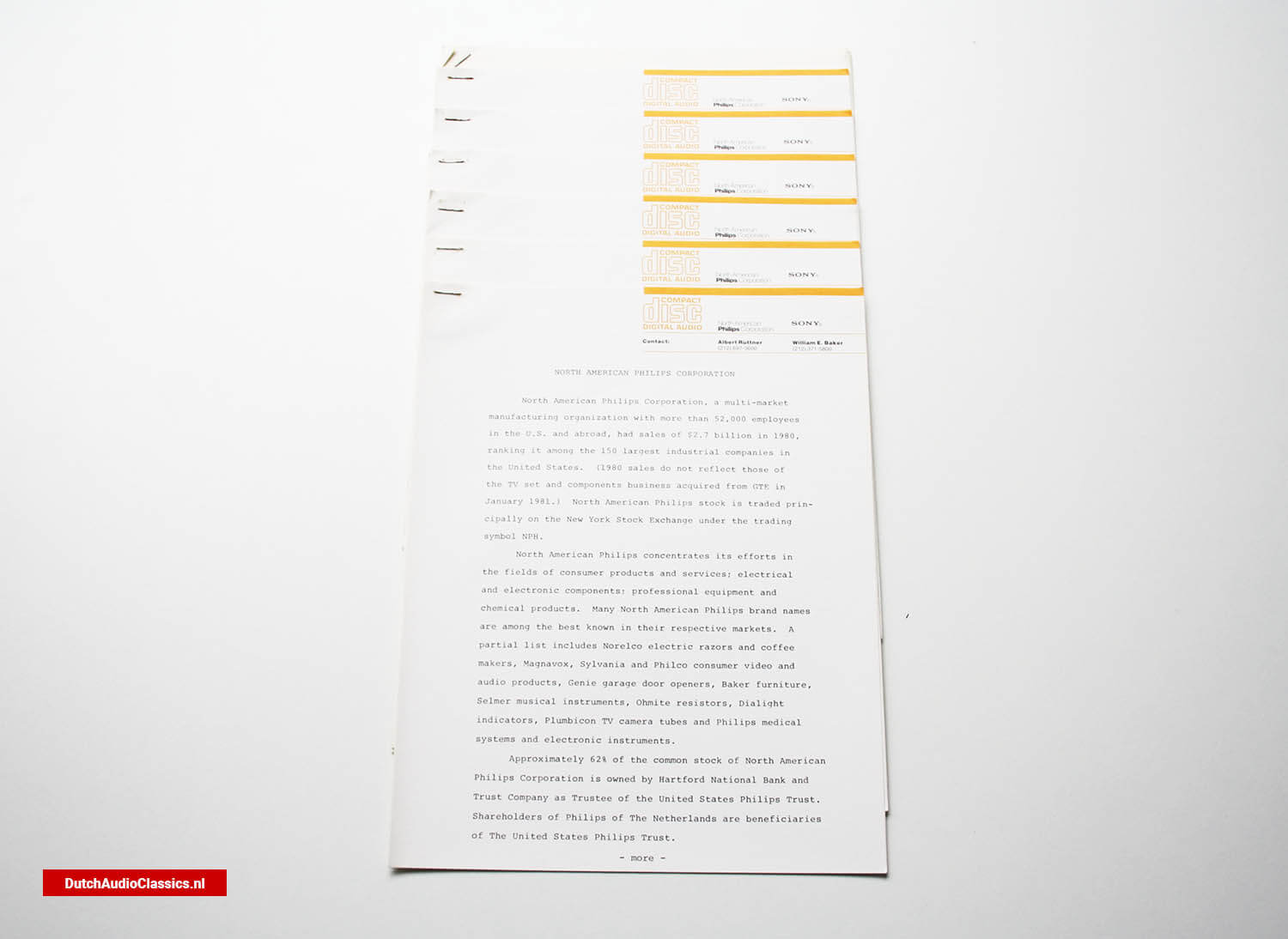 Philips/Sony press kit 27 May 1981 New York
Philips/Sony press kit 27 May 1981 New York
 Frank L. Randall JR, Vice Chairman of the North American Philips Corporation
Frank L. Randall JR, Vice Chairman of the North American Philips Corporation
